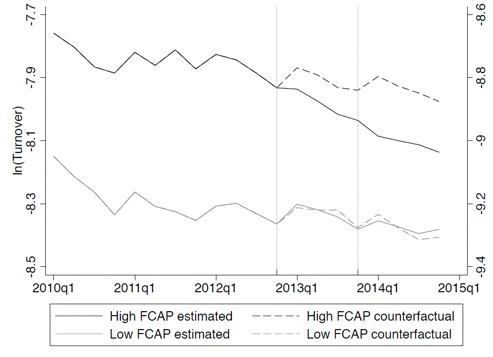Institutional investors have become the majority owners of most large corporations and are expected to play a key role for financial development by providing funding for firms, enhancing market liquidity through more active trading, and by promoting better corporate governance in the companies in which they invest.
For developing countries, while most of the literature has focused on the impact of foreign institutional investors on capital markets, little is known about the relation between domestic institutional investors and trading activity, transactions costs, and governance practices. Understanding the role of domestic investors is particularly important since in many of these countries, business groups, which are typically collections of publicly traded companies with significant amount of common ownership, dominate private sector activity. In such context, money management institutions which belong to these business groups are prone to conflicts of interest between their fiduciary responsibilities and the objectives of their own management. For example, business groups’ relations can be used by controlling managers as a mechanism to enhance the entrenchment of corporate control. Alternatively, an institutional investor which belongs to a business group might have access to private information in affiliated firms. Ownership concentration and business group ties potentially exacerbates information asymmetries, discouraging investment.
In a recent paper entitled “Informed Trading in Business Groups, Ownership Concentration, and Market Liquidity” Miguel Leaño and I study the information available to asset managers when they belong to a business group and the consequences of ownership concentration on secondary market liquidity. We use data on monthly portfolio holdings of all active Colombian pension funds in domestic stocks from 2004 to 2014 to examine how Pension Fund Managers (PFAs) trade in firms that belong to their own business group.
We find that PFA’s trades in a group-affiliated company are more correlated with the stock’s future performance than: (i) trades by non-affiliated funds in the same stock, and (ii) trades by the same fund in other similar stocks with no affiliation. Moreover, while PFAs trade in anticipation of abnormal returns in affiliated firms, they trade after the realization of returns in non-affiliated companies. The results are robust to the inclusion of the PFAs’ fractional ownership in each firm. Overall, group affiliation seems to be a source of private information for pension fund managers.
To estimate the effects of institutional ownership on market liquidity we use the cross sectional variation in stock ownership concentration resulting from the merger and acquisition (M&A) activity among PFAs in 2012 and 2013. Our empirical strategy follows a difference-in-difference approach by assessing whether there were any disproportional changes in trading activity and bid-ask spreads for stocks in which PFAs had large common ownership before the M&A deal. The effects we document are economically and statistically significant. For the average stock, a one percent increase in institutional ownership concentration implies a 3.4% rise in the bid-ask spread and a 4.0% reduction in turnover. Our findings suggest that increased institutional ownership, via the threat of informed trading, is adversely affecting liquidity in the domestic stock market.
Figure 1: Turnover for stocks with high and low common ownership (FCAP) before and after each M&A deal among fund managers. For each group we present the estimated turnover in the absence of M&A activity (vertical lines indicate the dates when the M&A deals were finalized).
Our findings have several policy implications. The benefits of financial reforms such as the introduction of international standards in accounting, financial disclosure, security trading and clearance are likely to be constrained by each country's institutional environment. Domestic institutional investors with extensive ties to local industries might hamper financial development by indirectly discouraging outside investors to participate in these markets, increasing the cost of capital for firms. Moreover, by discouraging outside investors to trade these assets, secondary markets might become less informationally efficient, failing to provide useful signals to households, firms, financial intermediaries, and regulatory authorities. It is possible that the private benefits of information flows between business groups and the potential economies of scale in the asset management industry might be out-weighted by the social costs of higher cost of capital and less efficient markets. Regulation discouraging trading activity in group-affiliated firms and investment rules that promote diffuse ownership concentration might need to be considered by the local authorities.




Join the Conversation